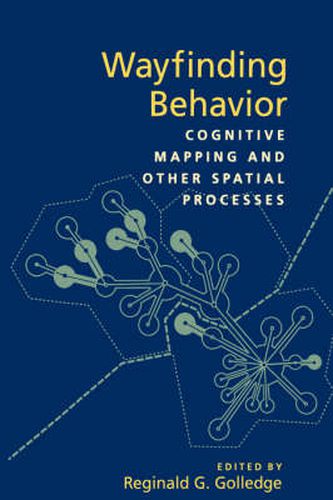Readings Newsletter
Become a Readings Member to make your shopping experience even easier.
Sign in or sign up for free!
You’re not far away from qualifying for FREE standard shipping within Australia
You’ve qualified for FREE standard shipping within Australia
The cart is loading…






The metaphor of a cognitive map has attracted wide interest since it was first proposed in the late 1940s. Researchers from fields as diverse as psychology, geography and urban planning have explored how humans process and use spatial information, often with the view of explaining why people make wayfinding errors or what makes one person a better navigator than another. Cognitive psychologists have broken navigation down into its component steps and as an interplay of neurocognitive functions, such as spatial updating and reference frames or perception-action couplings . But there has also been an intense debate among biologists over whether animals have cognitive maps or have other forms of internal spatial representations that allow them to behave as if they did. In this volume, Reginald Golledge brings together a group of scholars to offer a comprehensive survey of current research in these diverse fields. Among the common themes they discover is the psychologists’ black box approach, in which the internal mechanisms of spatial perception and route planning are modelled or constructed, like metaphors, based on the behavioural evidence. Cognitive neuroscientists, on the other hand, have attempted to discover the neurocognitive basis for spatial behaviour. They have shown, for example, that damage in the hippocampus system invariably impairs the ability of animals and humans to learn about, remember and navigate through environments, and studies in humans show that neurons in this system code for location, direction and distance thereby providing the elements needed for a mapping system. Artificial intelligence and robotics theorists attempt to construct intelligent mapping systems using computer technology. In these areas, there is growing evidence that, as in human wayfinding processes, useful representations cannot be achieved without sacrificing completeness and precision.
$9.00 standard shipping within Australia
FREE standard shipping within Australia for orders over $100.00
Express & International shipping calculated at checkout
The metaphor of a cognitive map has attracted wide interest since it was first proposed in the late 1940s. Researchers from fields as diverse as psychology, geography and urban planning have explored how humans process and use spatial information, often with the view of explaining why people make wayfinding errors or what makes one person a better navigator than another. Cognitive psychologists have broken navigation down into its component steps and as an interplay of neurocognitive functions, such as spatial updating and reference frames or perception-action couplings . But there has also been an intense debate among biologists over whether animals have cognitive maps or have other forms of internal spatial representations that allow them to behave as if they did. In this volume, Reginald Golledge brings together a group of scholars to offer a comprehensive survey of current research in these diverse fields. Among the common themes they discover is the psychologists’ black box approach, in which the internal mechanisms of spatial perception and route planning are modelled or constructed, like metaphors, based on the behavioural evidence. Cognitive neuroscientists, on the other hand, have attempted to discover the neurocognitive basis for spatial behaviour. They have shown, for example, that damage in the hippocampus system invariably impairs the ability of animals and humans to learn about, remember and navigate through environments, and studies in humans show that neurons in this system code for location, direction and distance thereby providing the elements needed for a mapping system. Artificial intelligence and robotics theorists attempt to construct intelligent mapping systems using computer technology. In these areas, there is growing evidence that, as in human wayfinding processes, useful representations cannot be achieved without sacrificing completeness and precision.